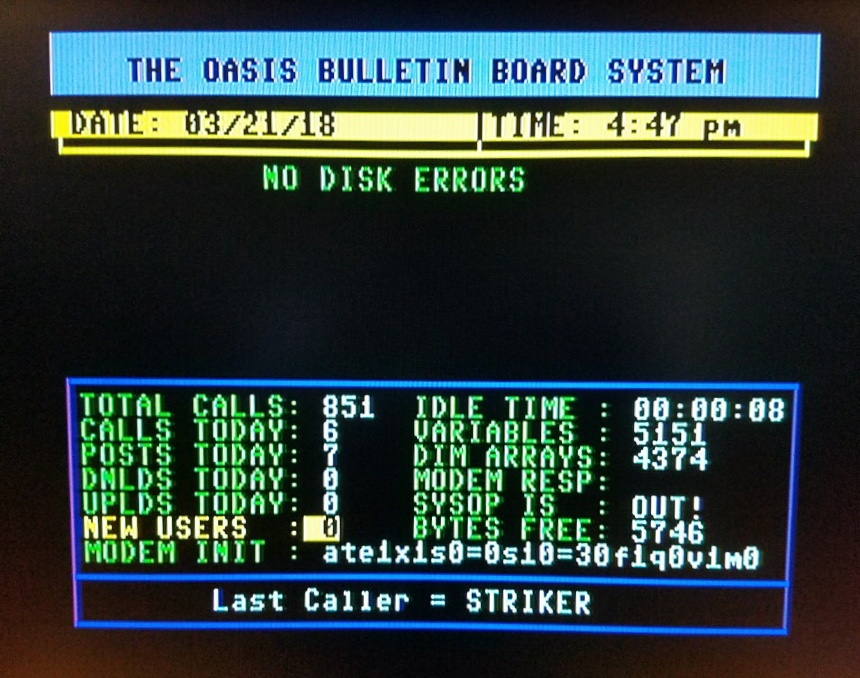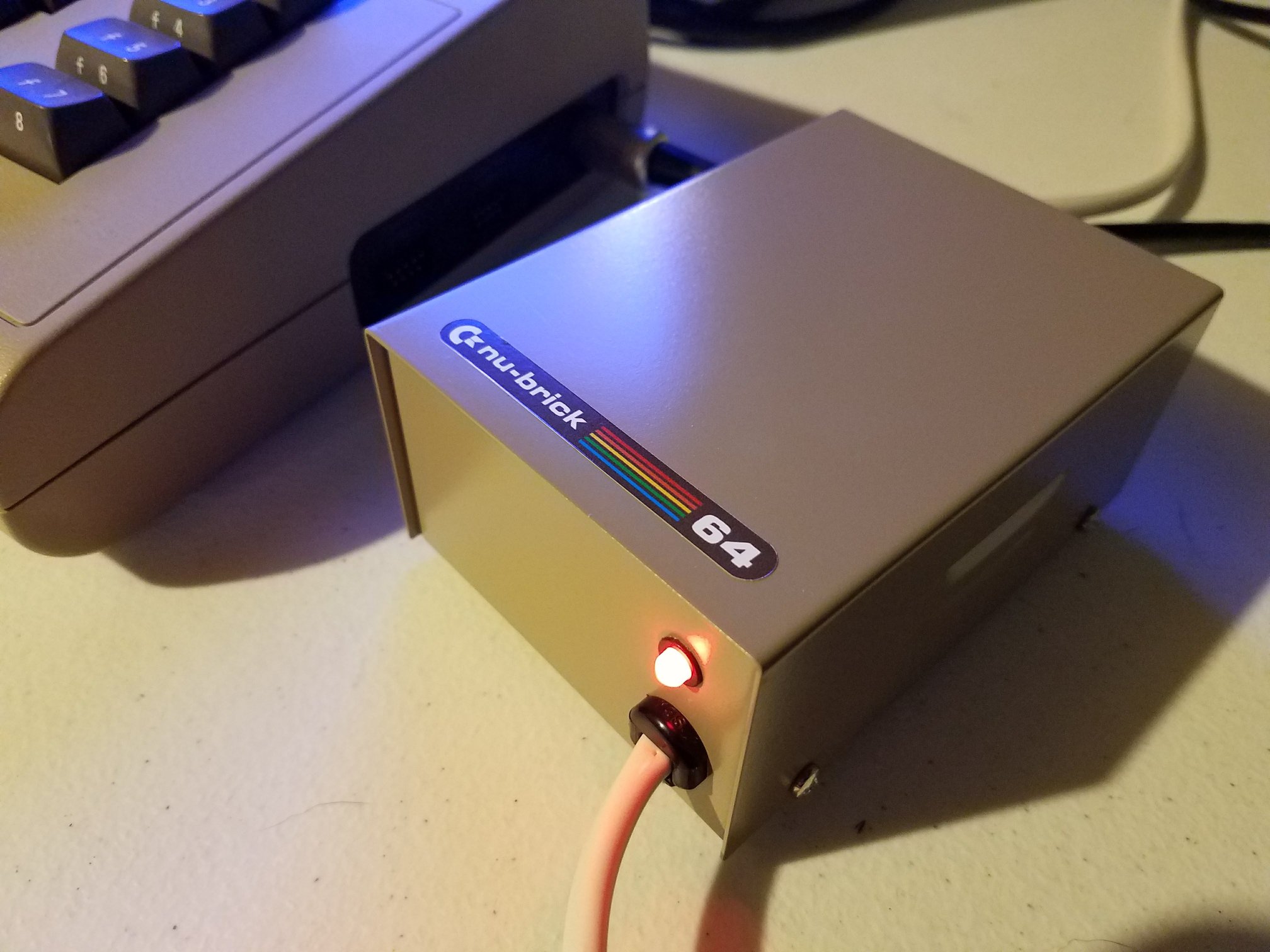TexElec has just released new Commander X16 hardware just in time for the holidays!
Commander X16 Dual MIDI / Wavetable Card
The Commander X16 Dual MIDI / Wavetable Card is a powerful new accessory designed to bring advanced MIDI and wavetable functionality to the Commander X16 system. Equipped with a dual UART IC capable of speeds up to 1Mbps, the card provides a versatile setup for both MIDI input and output, as well as an onboard wavetable connection. Port A includes a MIDI input and output via two 3.5mm to standard 5-pin DIN dongles, while Port B connects directly to an internal wavetable header. This configuration allows users to interface easily with external MIDI devices and integrates the wavetable’s audio directly into the X16’s system audio, streamlining setup for musicians and retro computing enthusiasts.
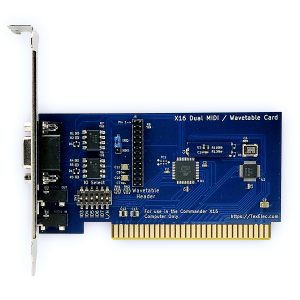 One standout feature of the card is its adaptability: it supports speeds up to the standard 31.25Kbps MIDI baud rate but can also handle higher speeds, up to 1Mbps. To protect against interference, each MIDI input is isolated with a high-speed 6N137 opto-isolator. For users who require multiple external MIDI instruments, an optional breakout board provides both MIDI IN and OUT ports for both Port A and Port B using standard 5-pin DIN connectors, adding flexibility for complex setups. The wavetable header, inspired by classic PC sound cards like the Sound Blaster, features a 26-pin layout that supplies the power and reset signals needed by various wavetable modules.
One standout feature of the card is its adaptability: it supports speeds up to the standard 31.25Kbps MIDI baud rate but can also handle higher speeds, up to 1Mbps. To protect against interference, each MIDI input is isolated with a high-speed 6N137 opto-isolator. For users who require multiple external MIDI instruments, an optional breakout board provides both MIDI IN and OUT ports for both Port A and Port B using standard 5-pin DIN connectors, adding flexibility for complex setups. The wavetable header, inspired by classic PC sound cards like the Sound Blaster, features a 26-pin layout that supplies the power and reset signals needed by various wavetable modules.
Compatibility is also a focus, with the card’s dual UARTs based on the widely recognized TL16C2550 chip, which allows programmers familiar with vintage systems to leverage the card’s high-speed communication capabilities. Configurable through DIP switches, the card offers 10 selectable I/O ranges and includes NMI/IRQ options, making it easier to integrate into different configurations or even use multiple MIDI cards. The card’s default I/O range, IO6-low, was chosen to avoid conflicts with other expansion cards, ensuring smooth operation within the Commander X16 ecosystem.
For hobbyists seeking to enhance the X16’s audio capabilities, the Commander X16 Dual MIDI / Wavetable Card offers an exciting expansion. With its support for both traditional and high-speed MIDI, its integration of wavetable audio, and its adaptable configuration options, this card is poised to enrich the creative potential of retro and modern setups alike.
Commander X16 MIDI Breakout Board
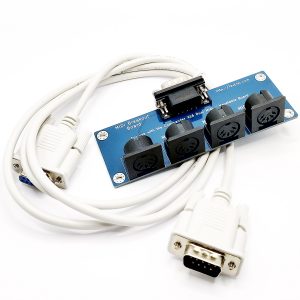 The Commander X16 MIDI Breakout Board is an expansion designed exclusively for use with the Commander X16 Dual MIDI / Wavetable Card, connecting through a rear-facing DB9 port on the MIDI card. This breakout board enhances flexibility and reliability, providing two MIDI inputs and two outputs for seamless 32-channel control of multiple external MIDI devices. It allows simultaneous use of the internal MIDI wavetable while supporting complex multi-instrument setups. The board includes a DB9 straight-through cable to connect with the MIDI card, so users only need standard 5-pin DIN MIDI cables to start multi-tracking across devices.
The Commander X16 MIDI Breakout Board is an expansion designed exclusively for use with the Commander X16 Dual MIDI / Wavetable Card, connecting through a rear-facing DB9 port on the MIDI card. This breakout board enhances flexibility and reliability, providing two MIDI inputs and two outputs for seamless 32-channel control of multiple external MIDI devices. It allows simultaneous use of the internal MIDI wavetable while supporting complex multi-instrument setups. The board includes a DB9 straight-through cable to connect with the MIDI card, so users only need standard 5-pin DIN MIDI cables to start multi-tracking across devices.
Little Dreamer Wavetable Module
The Little Dreamer Wavetable Module is an advanced sound solution designed for the Commander X16 MIDI card, as well as other PC sound cards that feature a standard 26-pin wavetable header, like many classic Sound Blaster cards. At its core is the Dream SAM2695 synthesizer IC, a powerful chip known for its high-fidelity General MIDI support with up to 64-voice polyphony. Even with reverb, chorus, and spatial effects applied, the Little Dreamer can maintain up to 38 voices, making it ideal for rich, layered compositions. Its compact PCB design allows for easy installation, even in space-constrained setups, while the 5V power requirement keeps it compatible with many systems.
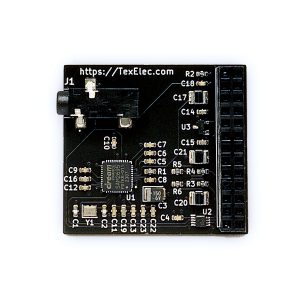 In addition to its General MIDI capabilities, the Little Dreamer offers an optional MT-32 compatible instrument set, appealing to retro music enthusiasts. Several drum kits are also included, making it versatile for various musical genres. Unique among wavetable modules, it features a microphone input that can add a “karaoke” function with programmable echo. The microphone input is mixed with MIDI audio output and is controlled through custom NRPN messages that manage mic level, effects, and overall balance.
In addition to its General MIDI capabilities, the Little Dreamer offers an optional MT-32 compatible instrument set, appealing to retro music enthusiasts. Several drum kits are also included, making it versatile for various musical genres. Unique among wavetable modules, it features a microphone input that can add a “karaoke” function with programmable echo. The microphone input is mixed with MIDI audio output and is controlled through custom NRPN messages that manage mic level, effects, and overall balance.
For those interested in testing the module on a Commander X16, the Little Dreamer has been showcased by the 8-Bit Guy in his 2024 Product Reveals video, demonstrating its capabilities within retro computing environments. With its flexible feature set and compact design, the Little Dreamer brings new audio possibilities to the Commander X16 and any compatible system equipped with a wavetable header.
USB MIDI Wavetable Header
The USB MIDI Wavetable Header is a versatile solution that enables modern PC users to connect and utilize legacy wavetable modules via USB. Using a WCH CH345 USB to MIDI IC and a 26-pin wavetable header, this header board is compatible with a range of modules, including those that were originally designed for Sound Blaster cards. It provides seamless plug-and-play support on most modern operating systems, making it an ideal tool for MIDI enthusiasts and sound designers who want to integrate vintage wavetable sounds into contemporary setups. With a standard 1/8” stereo line-level audio output, users can easily capture audio from the connected wavetable module.
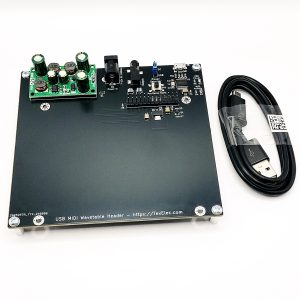 This header board accommodates both 5V-only modules and those that require additional ±12V DC power, offering a flexible power setup. With a jumper that allows users to choose between USB power and DC power (via an external power supply), the device ensures compatibility across a variety of wavetable modules, both modern and vintage. This adaptability is critical, as some modules like the Little Dreamer only need 5V, whereas older modules from the 1990s may need the full ±12V power supply. Users can connect the external DC power supply, set the jumper accordingly, and enjoy reliable power, even for larger or higher-current modules.
This header board accommodates both 5V-only modules and those that require additional ±12V DC power, offering a flexible power setup. With a jumper that allows users to choose between USB power and DC power (via an external power supply), the device ensures compatibility across a variety of wavetable modules, both modern and vintage. This adaptability is critical, as some modules like the Little Dreamer only need 5V, whereas older modules from the 1990s may need the full ±12V power supply. Users can connect the external DC power supply, set the jumper accordingly, and enjoy reliable power, even for larger or higher-current modules.
Designed with ease of use in mind, the USB MIDI Wavetable Header includes a reset button to help avoid “hanging notes” by quickly resetting the wavetable module. For high compatibility, the CH345 USB interface typically does not require additional drivers on Linux and Windows systems, and users report broad compatibility even on macOS, given its similarity to the CH340 USB driver commonly used with serial devices. This board is an efficient, practical way to incorporate wavetable sounds into MIDI projects, offering modern accessibility to classic audio synthesis.
A micro-USB cable is included for connecting the device to a PC, but an external DC power supply will need to be purchased separately if required. With this flexible setup, users can leverage both newer 5V modules and older, higher-power wavetable modules in their MIDI projects, bridging the gap between retro and modern audio.







